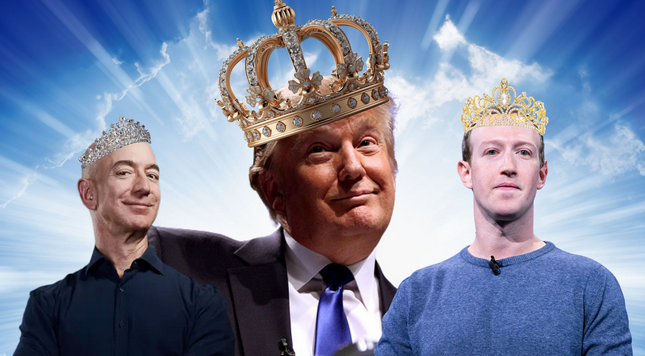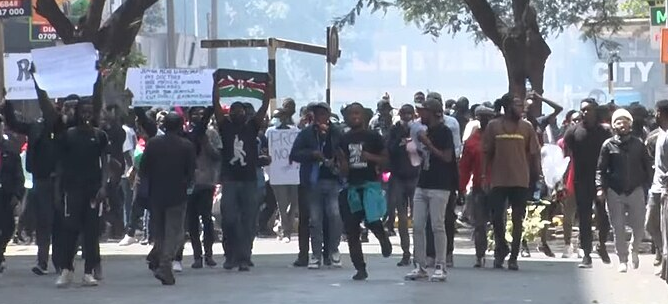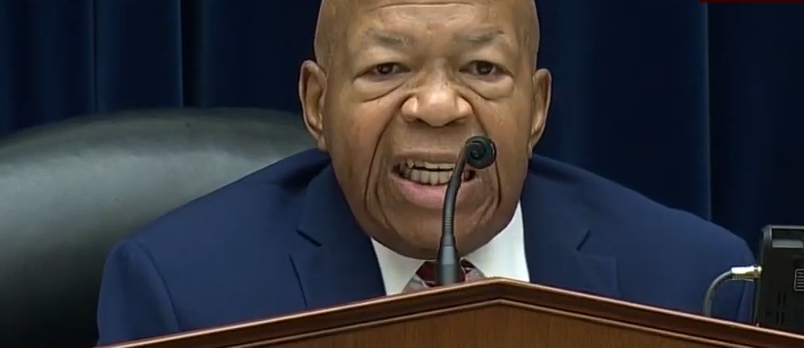Photos: YouTube
Black Americans have called for Reparations on numerous counts (including, but not limited to): Murder, rape, and other physical harm; uncompensated labor, property theft; and a spectrum of racial discriminatory acts.
Relatedly, BlackEconomics.org has urged that reduced life expectancy for current day Black Americans, which is caused in part by uncertainty (anxiety and stress), should be factored into the Reparations equation.[1]
Not as a reason for Reparations, but as identification of a purveyor of harm that must be addressed by Reparations, we should consider the recent decision in the Sandy Hook families v. Alex Jones case. The case clarified that the historical and ongoing defamation of Black Americans by the mass media has helped motivate, reinforce, and sustain racial discrimination that is an important causal factor in producing adverse outcomes for Black Americans on many fronts. The US Government, as the authority under which all the egregious wrongs have been exercised against Black Americans, is well recognized as the chief responsible party expected to provide Reparations. However, the wrongs of all public and private parties (inthis case the media) that have contributed to adverse Black American outcomes should be identified.
Media’s bias-engendering role
In a US legal context, racial discrimination is unacceptable and illegal. In an economic context, racial discrimination may be taste-based, statistical, or structural.[2] However, a fundamental reason/cause for racial discrimination is the existence of bias in the society. Therefore, besides economic factors, it is important to consider the social/cultural factors that motivate, reinforce, and sustain bias. Racism and its follow-on discrimination can be handed down from adults to youth from generation to generation. It is difficult to halt the perpetuation of racism through this channel. On the other hand, racism that is promulgated explicitly and implicitly through mass media platforms and sources can, theoretically, be halted. Logically, the discontinuation of expressions of racist attitudes, actions, language, and images in mass media can go far in eliminating racism from the culture.
The conundrum has been: How can the mass media be constrained to prohibit bias-engendering content that motivates racial discrimination?
The answer is in plain view in the Sandy Hook families v. Alex Jones case. The case determined that a mass media personality participated in conveying information that was harmful to family members who lost loved ones in the Sandy Hook massacre. It is a fait accompli for Black Americans to prove that considerable media content (explicit and implicit/subliminal) engenders/induces racist behavior. This, in a social system where “White Supremacy,” “implicit bias,” and “stereotype threat,” concepts and terms are in common parlance.
Selected examples of the types of media content (programs and advertisements) that generate racist attitudes and racial discriminatory behavior are presented below. But before these examples are presented, it is important to state that racist attitudes and behaviors are usually exhibited toward an outgroup. Also, it is critical to note that, according to the US Census Bureau, Black Americans comprise currently less than 14 percent of the US population.[3] Therefore, it is common knowledge that many non-Black Americans have had, and will have, very limited interaction with Black Americans during their lifetime. This is especially true given the highly segregated nature of US housing arrangements[.4] Yet, Black Americans experience racism everywhere we go. Consequently, individual and mass media conveyance of racism-engendering information/content is the answer to the question: Why does racism exist and persist?
The following are selected examples of racist mass media content:
• Black Americans performing spontaneous jigs.
• Overrepresentation of Black Americans participating in sports and musical entertainment.
• Overrepresentation of Black Americans participating in religious activities.
• The near absence of images of Black Americans as leaders of corporate business.
• Underrepresentation of Black Americans in STEMAIR (science, technology, engineering, mathematics, artificial intelligence, and robotization) fields.
• Overrepresentation of Black Americans as unemployed.
• Overrepresentation of Black Americans as LBGTQ.
• Overrepresentation of Black Americans as joyful (smiling/laughing/happy).
• Overrepresentation of Black Americans in comedies and as comedians.
• Overrepresentation of Black Americans engaging in criminal behavior (especially illegal drug use and sex crimes) and being punished accordingly.
• Underrepresentation of non-Black Americans engaging in criminal behavior (especially illegal drug use and sex crimes) and being punished accordingly.
• Overrepresentation of Black Americans exhibiting healthcare needs.
• Overrepresentation of Black Americans as homeless or socially disconnected.
• The practice of presenting non-Black mass media subjects as physically larger than Black subjects.
• The practice of presenting Black sports presenters in plaid and bright colored attire, which is viewed as “non-dynamic,” while presenting non-Black sports presenters in dark attire, which is viewed as “dynamic.”
• The conflation of the word and color white with favor, and the word and color black with disfavor.
These examples represent the “tip of the iceberg.” They serve as examples of mass media content that suggests to mass media consumers that Black Americans are inconsistent with the “norm” and “favorable” for American society. This content informs and motivates a view that Black Americans are unworthy of fair and balanced inclusion in the society. Ultimately, the content serves as justification for racism and for exhibiting racial discriminatory behavior toward Black Americans.
Defamation
If we are to tag the mass media as a defamer of Black Americans, then we must be crystal clear concerning the interpretation of “defamation” in the law. To interpret defamation legally, we use Cornell Law School’s Legal Information Institute (LII). The LII reports that successful defamation suits must show that: (1) A false statement (written, verbal, or presumable an image) is presented as fact; (2) the statement must bereceived by a third party; (3) the party making the statement does so in a negligent manner; and (4) damage or harm is caused to the reputation of the plaintiff.5 We must emphasize that a court’s interpretation of the following four terms/concepts will prove to be critical in a defamation claim: Truth, negligence, malice, and statute of limitations.
First Amendment Rights
An a priori response to a defamation claim is to run for cover under First and Fourteenth Amendment Rights. Again, relying on ILL, we conclude that the mass media has the right to unabridged expression as long as it is “truthful” or based on an “honest opinion.”6 Of relevance is a somewhat less protected form of expression by “commercial” interests, which must not be “misleading.”7 It will be interesting to see how courts assess mass media content that: Does not convey proportionately representative and realistic images of Black Americans; on a combined basis motivates, reinforces, and sustains racial discrimination behavior that harms Black Americans; and that is used to enable market segmentation and create other favorable outcomes for mass media operations.
Conclusion
As a lifetime consumer of mass media, we recognize the many ways that mass media has promulgated content that motivates, reinforces, and sustains racial discrimination behavior. Given the unquestioned pain suffered by Black Americans from racial discrimination, whose cause can be linked directly and indirectly to the mass media, and given “defamation” as treated in the Sandy Hook families v. Jones case, it appears that Black Americans have a viable defamation case vis-à-vis the mass media.
All the foregoing causes us to ask two questions: (1) Why have Black Americans not tagged the media with a defamation claim in the past? and (2) How can a defamation claim be lodged against the media today? On the first question, to our knowledge, Black Americans and the mass media have not been brought together as plaintiffs and defendants in a US lawsuit, respectively.[8] However, what is widely known is that large Black American “Civil Rights” organizations have challenged important mass media organizations about content that is considered unfavorable to Black Americans. In certain cases, these challenges been met by mass media organizations appeasing Black organizations by offering charitable contributions and agreeing to increase the roles of Black Americans in mass media operations. However, these actions have not produced a halt in the promulgation of racial discrimination-engendering media content. Importantly, Black Americans have not established a watchdog organization to chronicle adverse mass media content with the intent of holding media organizations accountable.
On the second question, we suggest that, because certain important and large Black American organizations seemingly have friendly relationships with key mass media organizations, we should turn away from those organizations and urge Historically Black Colleges and Universities (HBCUs) that have law schools to formulate and prosecute the proposed defamation case against the media.[9]
To be clear, we are not proposing the pursuit of a Black American defamation case against the mass media to improve Black American outcomes in the US. In our view, there never was and even now there is no new hope for the full, fair, and successful integration of Black America into the American “melting pot.” Rather, as is evident from our submissions, we advocate for Black American self-determination. However, a Black American mass media defamation case will extend a process of pinpointing parties that are palpably culpable for imposing suffering upon Black Americans directly and indirectly under the auspices of the US Government. The latter party bears ultimate responsibility for serving Black Americans with Reparations.
Dr. Brooks Robinson is the founder of the Black Economics.org website: https://blackeconomics.org/index.php/about-us/
References:
[1] See B. Robinson (2020), “The Black Economics of Uncertainty,” (Ret. 102022).
[2] See Kevin Lang and Ariella Kahn-Lang Spitzer (2020), “Race Discrimination: An EconomicPerspective,” Journal of Economic Perspective; Vol. 34, No. 2, pp. 68-89.
[3] See the US Census Bureau’s Quick Facts for the US; https://www.census.gov/quickfacts/fact/table/US/PST045221 (Ret. 102022).
[4] BlackEconomics.org’s 2019 research revealed that less than 10 percent of 2010 US Census Tracts reflect Black populations that comprise greater than 50 percent of the total. This means that, at the marginthe probability that the next person encountered outside of one’s household, but in one’s area of influence (community), will be a Black American is likely to be small in most US Census Tracts. See B.B. Robinson (2019), “Census Tracts, Opportunity Zones, and Tax Breaks.” (Ret. 102022).
[5] See “Defamation” at Cornell Law School’s Legal Information Institute (LII); https://www.law.cornell.edu/wex/defamation#:~:text=To%20prove%20prima%20facie%20defamation,entity%20who%20is%20the%20subject (Ret. 101722).
[6] Ibid. LII, “First Amendment;” https://www.law.cornell.edu/wex/first_amendment (Ret. 102022).
[7] Ibid. LII, “Commercial Speech;” https://www.law.cornell.edu/wex/commercial_speech (Ret. 102022).
[8] We searched for such cases through WEST LAW (Thompson Reuters) using the following search term: “Black (African) American and Mass Media and Defamation and Stereotypes and Bias.”
[9] In 2022, 17 HBCUs operated law schools; https://hbcu-colleges.com/law (Ret. 102022).







